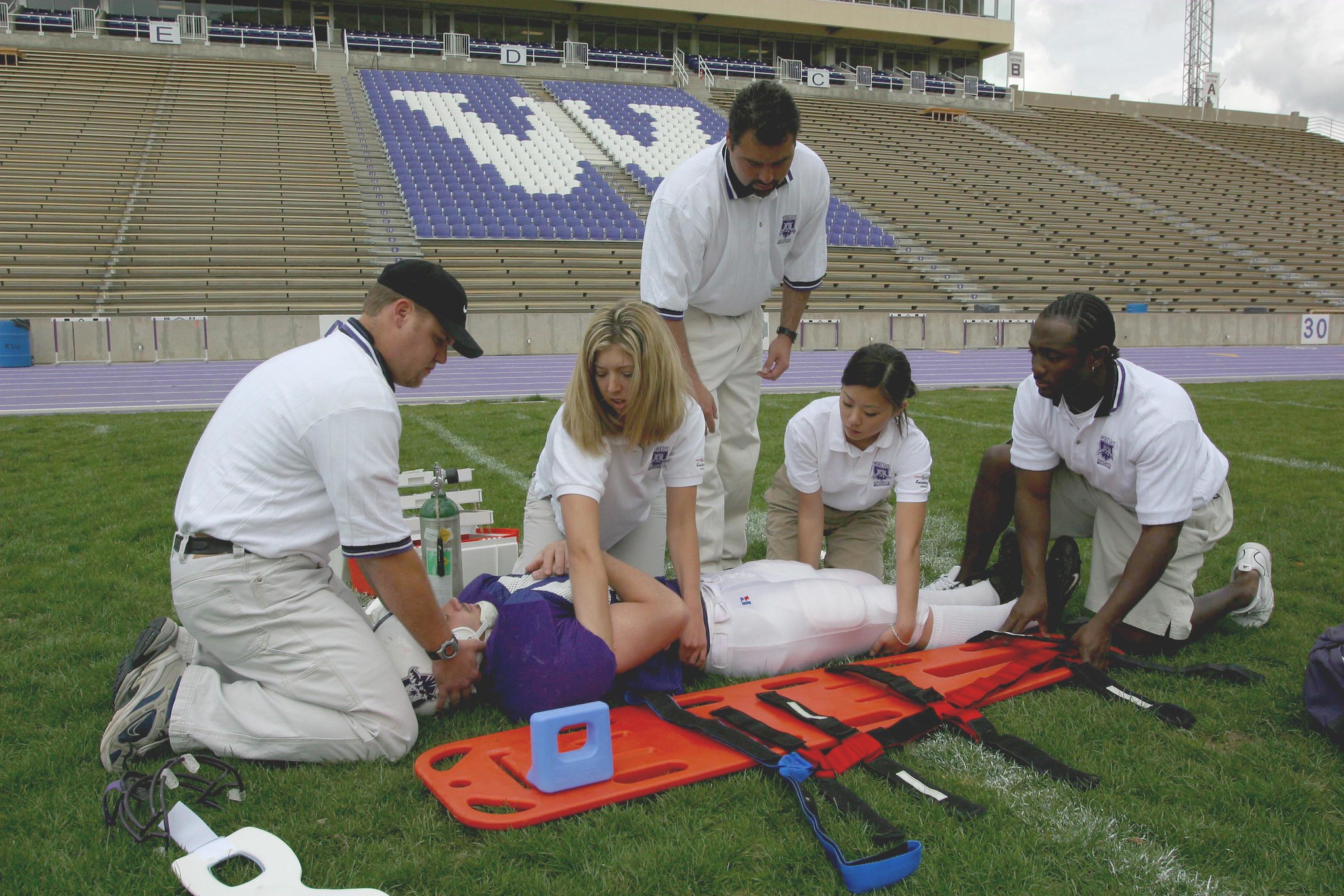2023-24 Catalog ARCHIVED CATALOG: Content may no longer be accurate.
Department of Emergency Healthcare
|
|
 Return to: Dr. Ezekiel R. Dumke College of Health Professions Return to: Dr. Ezekiel R. Dumke College of Health Professions

Department Chair: William Robertson, MEd, NRP
Location: Marriott Allied Health Building, Room 409
Telephone Contact: Ana McMurry 801-626-6521
Associate Professor: William Robertson; Assistant Professors: Andrea Lalumia, Christine O’Neil
Medical Advisor: Jon Apfelbaum, M.D.
 A paramedic is a person who usually renders advanced life support care to persons at the site of an illness or injury or en route to a hospital facility. They function under the direct supervision of an Emergency Physician or Registered Nurse and are certified for such functioning by a state Emergency Medical Services agency. A paramedic is a person who usually renders advanced life support care to persons at the site of an illness or injury or en route to a hospital facility. They function under the direct supervision of an Emergency Physician or Registered Nurse and are certified for such functioning by a state Emergency Medical Services agency.
The institutional certificate and two-year applied science degree program in Paramedic Studies are based on a national curriculum designed to provide an academic background in science, health related fields, and communication using critical thinking and assessment based management. The program prerequisites provide the general requirements and foundation that prepares the student to meet the demands of the paramedic courses.
Satisfactory completion of the prerequisite requirements are required prior to starting the paramedic sequence and include:
- a “C” or better in ENGL 1010 , MATH 0990 , Anatomy and Physiology classes, and Medical Terminology; and
- an overall GPA of 2.7 or above; and
- Current state EMT Certification; and
- a score of 75% or better on the departmental EMT assessment exam on no more than two attempts
The longstanding Utah Bureau of EMS policy requiring one year of EMS experience or Advanced EMT has been relaxed. Eligible students may wish to consider PAR 1005 and PAR 1006 to gain EMS field experience prior to entering the paramedic program.
This program may require more than two years for completion depending upon the timing it takes for an individual to complete the prerequisite requirements.
Weber State contracts with authorized clinical and field agencies to precept students for EMT and paramedic certification. Background criminal investigation and drug testing of students is required prior to starting PAR 2000 in the fall semester.
“The WSU Emergency Healthcare Department’s paramedic program is accredited by the Commission on Accreditation of Allied Health Education Programs (www.caahep.org) upon the recommendation of the Committee on Accreditation of Educational Programs for the Emergency Medical Services Professions (CoAEMSP).”
The paramedic program will “prepare competent entry-level Paramedics in the cognitive (knowledge), psychomotor (skills), and affective (behavior) learning domains,” with or without exit points at the Emergency Medical Responder, Emergency Medical Technician, and Advanced Intermediate levels.
Acceptance to the paramedic program does not assure eligibility for a state or National Registry certification. Utah or a related state Office of EMS makes the final decisions on the issuance of professional licensor or certification. For students that may have a disability or testing accommodation concerns you must contact the Utah Bureau of EMS or National Registry of EMT’s. See health.utah.gov/ems and nremt.org.
Courses
Emergency Care and Rescue (EMT and Paramedic) Course Descriptions
ProgramsAssociate of Applied ScienceInstitutional CertificateBachelor of ScienceEmphasis Option for Bachelor of Interdiscplinary Studies
BIS emphases are also offered for most programs with a minor.
Certification
Note: Certifications are not Weber State University degrees. Please work with the applicable department on requirements for certifications.
 Return to: Dr. Ezekiel R. Dumke College of Health Professions Return to: Dr. Ezekiel R. Dumke College of Health Professions
|